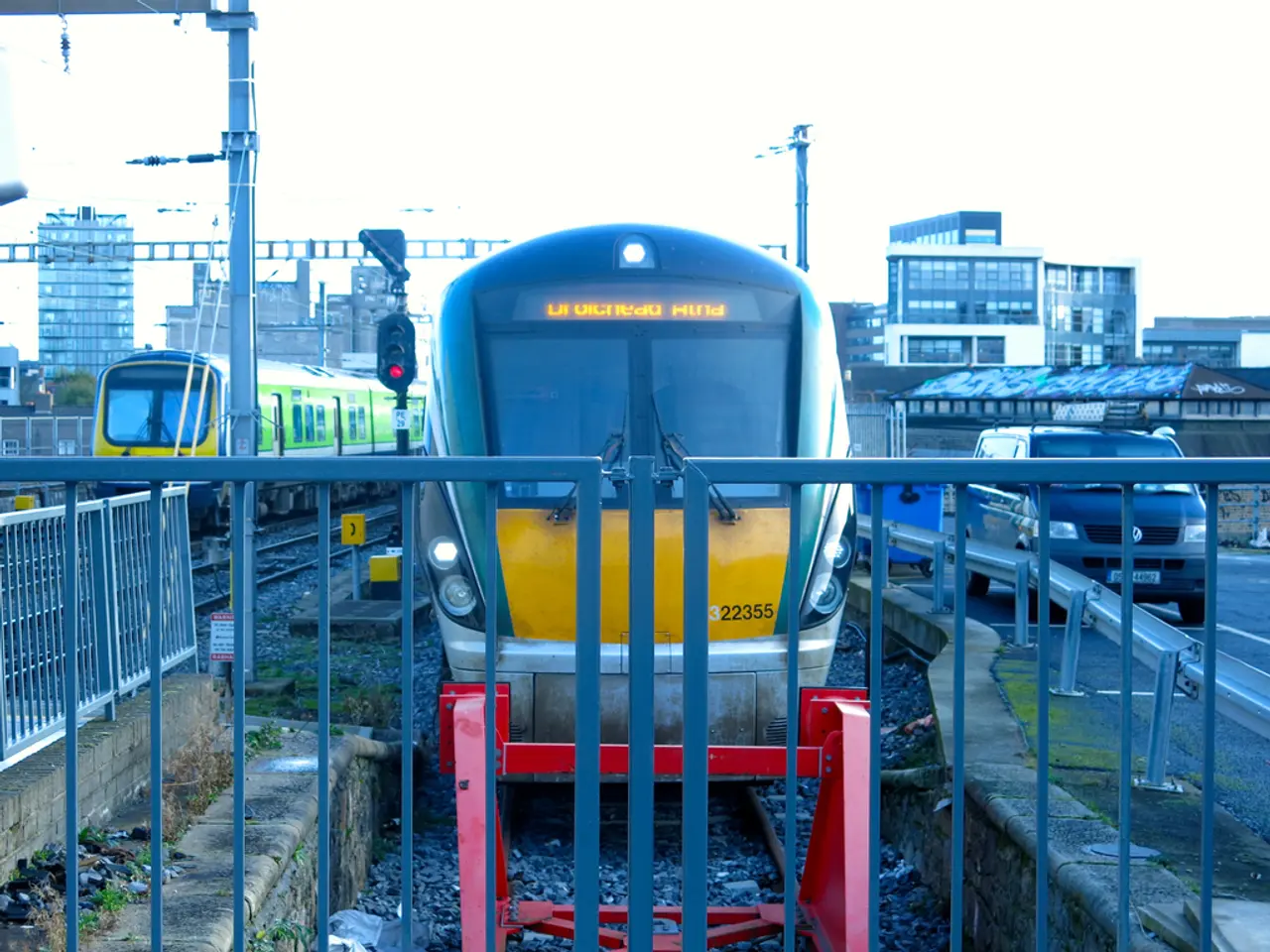Issues escalating on the Stadtbahn, causing concern amongst passengers. - Increasing Challenges Plaguing City's Railway System
Berlin's S-Bahn, the city's extensive commuter rail system, is currently facing several challenges. The railway is grappling with issues related to outdated infrastructure, particularly the use of century-old signal boxes, and problems with the signaling technology, particularly the track clearance signaling system.
The current warmer weather may be a contributing factor to the problems with the signaling technology. Despite the ongoing conversion to electronic signaling, which is scheduled to be completed by 2027, these issues are causing delays and disruptions, especially during rush hour, for several days.
The disruptions primarily affect several sections of the S-Bahn. These include the stretch between Bellevue and Tiergarten, and three neighboring areas of the section between Hackescher Markt and Friedrichstraße. Each affected section is only a few hundred meters long, but they are all crucial for smooth operation.
The problems mainly affect several sections of the S-Bahn, with passengers on the Ost-West connection, also known as the city rail line, experiencing more short-term disruptions. There have been other disruptions in recent days, such as problems with a switch in Charlottenburg, but these were not related to the problems around track clearance signaling.
The railway has established a special team of experts to investigate the exact causes and find solutions for these problems. The errors in the track clearance signaling system usually occur briefly, so identifying and fixing them can only be done step by step.
While not specifically mentioned for the Ost-West connection, various construction and maintenance activities across Berlin's S-Bahn network can cause delays. For instance, reduced speeds on certain lines like the S7 due to work near Griebnitzsee may lead to delays.
Deutsche Bahn is undertaking major renovation projects, such as the Hamburg-Berlin line, which aims to enhance reliability and efficiency. Although not directly addressing the S-Bahn's Ost-West issues, these efforts demonstrate a broader commitment to improving rail infrastructure.
The S-Bahn Berlin provides detailed information on timetable changes and disruptions, helping passengers plan their journeys in advance. In some areas, rail replacement bus services are implemented to mitigate the impact of construction and maintenance.
For specific information on the Ost-West connection, it would be necessary to consult local transit authorities or the S-Bahn Berlin directly. The German railway is struggling with an outdated infrastructure, including signal boxes that are over 100 years old and still operated manually. However, there is a replacement strategy for the first generation, and the current signal boxes on the city rail are to be replaced in the mid-2030s.
By 2027, the entire signaling technology on Berlin's S-Bahn is supposed to be electronic, which will hopefully resolve these ongoing issues and ensure smooth operation on the city rail line. The railway is working tirelessly to resolve these issues as soon as possible.
Read also:
- Stone mining has transformed the once renowned 'Sada Pathor' into a desolate, post-apocalyptic landscape.
- In the Heart of Soho, Manhattan, a New Brewery Emerges Underground
- Financial regulatory body OCC imposes Anti-Money Laundering (AML) disciplinary action against Wells Fargo.
- Revised Tax Policy for Motor Vehicles Pushed for Greater Eco-friendliness, Suggested by Court Auditors







